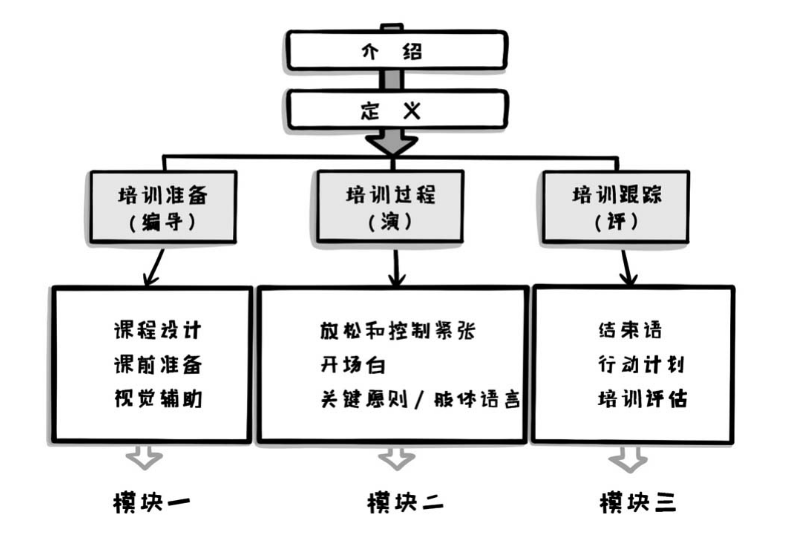1. Collecting information
1. Student information: How many people participated, how familiar they are with the topic, and whether they are familiar with each other; whether they signed up voluntarily or were assigned by the unit to participate; work content, expectations of students and supervisors; age, gender ratio, education level, work experience, etc.
2. Content information: practical theories, related cases; cited classics, data parameters; illustrated photos, video music; game tests, story philosophy, etc.When collecting course content information, try to find the source, time, data, etc. of the information as much as possible, and try to be as accurate as possible.
Second, build a logic line
1. Timeline or sequence of affairs: three steps of training preparation (course design, pre-class preparation, visual assistance), training process (relaxation and tension control, opening remarks, key principles/body language), training tracking (concluding remarks, action plan, training evaluation).

2. Spatial line: That is, from large to small, such as training for new employees. If your company is a multinational company, you can start step by step according to the logical relationship between the headquarters, China, and your company, from large to small.
3. Classification: For example, if new employees adapt to the workplace quickly, they may wish to start from three aspects: knowledge, skills, and attitude. What knowledge do new employees need to master, such as product knowledge, organizational structure, etc.; What skills do they need to possess, such as job operation skills, Office software operation skills, etc.; What attitudes do they need to possess, such as practicing corporate core values, etc.
3. Organizational points
1. Between the main points of each part, we must also pay attention to the logical relationship: we cannot think of what to say, and the main points must be arranged in accordance with the logical relationship of time, from large to small, classification, etc., and cannot be scattered and piled up at will.
2. The key points are prominent, and the trade-off is the way. You can't spend the same time on the explanation of each key point, so you have to highlight the key points. At the same time, don't try to talk too much about the main points. I always advocate that a trainer should not talk too much about knowledge points in class, but should speak the limited knowledge points deeply and thoroughly within a limited period of time. If you pile up too many knowledge points, each one is a quick drop of water, and the students won't feel too good.
Fourth, the tool method
1. Classroom training Classroom training includes: teaching method; multimedia teaching method; contextualized teaching; E-learning; testing.
2. Qizhi Training Qizhi training includes: business simulation: actual combat simulation; sand table simulation; case analysis; exercises, demonstrations; seminars, debates; guided discussions; games.
3. Experiential training Experiential training includes: visits; team training; field expansion; group competitions; role-playing.
4. Thinking innovation training Thinking innovation training includes: brainstorming; six thinking hats.


Leave a Reply